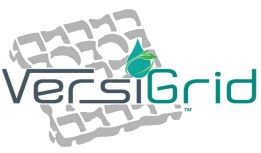We preserve the earth ...
The products and brands
VersiGrid™
|
 |
Preserving the water and the soil...
support your local planet
|
 |
Please note: for your convenience, you may download the VersiGrid™ Example LEED™ Credit Scorecard Calculator in Excel Format.
used for: to project how your goal of a LEED™-certified construction/built environment project will benefit from the correct utitlization and application of VersiGrid™, and by incorporting its usage into your design or site plan from the initial project conception/design phases.
benefit: use the LEED™ Scorecard to determine how many additional LEED™ Credit Points your local LEED-AP™ should grant, when the AP is correctly and accurately projecting environmental benefits derived from the correct application of ...
[item: 70% of gHg-release and the resulting carbon-footprint of new construction results directly and immediately from disturbing the soil; hence the incorporation of recycled building materials technology and all other LEED-Credit Points will only address approximately 30% of the gHg-release and resultant carbon footprint during new construction. In contrast, the correct use of VersiGrid during and prior to construction phases will minimize and/or prevent this major source of pollution resulting from all new construction. This will also apply to correctly using StabiliGrid for brownfield rehabilitation, historic buildings restoration, residential remodeling/redesign, commercial building expansion or remodeling, and other after-market construction projects.]
example:
IF: your project - before incorporating VersiGrid into your design - is able to attain only a LEED™ score of 14 LEED™ Credit Points = "not certified,"
AND-IF: you correctly fully incorporate and apply VersiGrid™ into your project, for all relevant applications (i.e. all exterior built environments, all SWR-MGT plans, green roof, and so forth),
THEN: the additional LEED points derived from the full utilization of VersiGrid™ into your project may elevate your project to the LEED™-PLATINUM certification level.
PLEASE NOTE: even a partial and/or minimal application and utilization of VersiGrid may elevate a project from "not certifed" to LEED-Silver or LEED-Gold certification levels. This is entirely dependent upon the professional skills - and the vision and the understanding of environmental sciences technology - on the part of your architect, designer, or design/build firm.
|
Credit 5.1 Reduced Site Disturbance (Protect or Restore Open Space)
Credit 5.2 Reduced Site Disturbance (Development Footprint)
Credit 6.1 Stormwater Management (Rate or Quantity)
Credit 6.2 Stormwater Management (Treatment)
Credit 7.1 Landscape and Exterior Design to Reduce Heat Islands (Non-Roof)
Credit 7.1 Landscape and Exterior Design to Reduce Heat Islands (Roof)
|
Water Efficiency Credit:
|
Credit 1.1 Water Efficient Landscaping (Reduce by 50%)
Credit 2 Innovative Wastewater Technologies
|
Materials and Resources:
|
Credit 3.1 and 3.2 Resource Reuse, Specify 5% to 10%
Credit 4.1 and 4.2 Recycled Content, Specify 25% to 50%
|
Energy & Atmosphere Credits
|
Credit 1.1-1.5 Optimize Energy Performance,20-60% New/10-50% Existing
|
Innovation & Design Process
|
This category suggests that a story be presented to integrate all of the innovative applications and uses of products and the resulting impact upon the project design and building use.
Example: REDUCED FUTURE MAINTENANCE, REPAIR and/or REPLACEMENT in areas subject to winter freeze/thaw cycles and groundsurges, due to the grids' porosity + flexibility, they are insusceptibe to the damage resulting from groundsurges that damage/deconstruct conventional forms of pavement . . .
|
